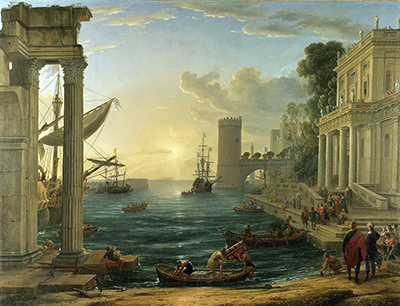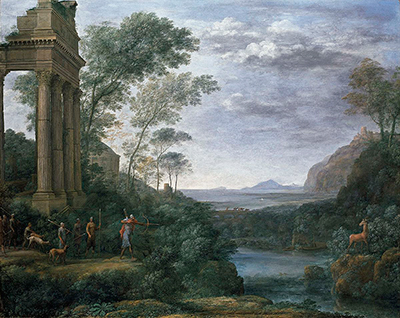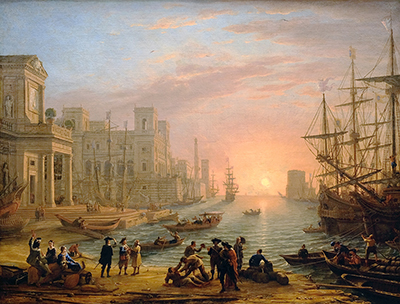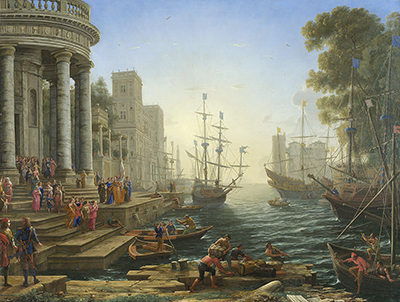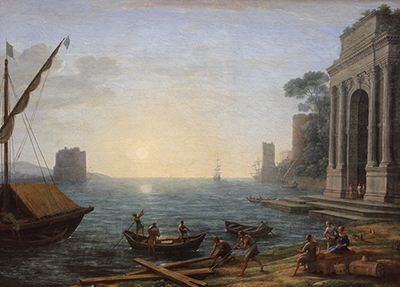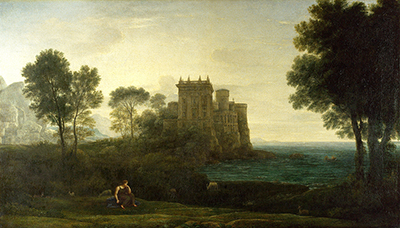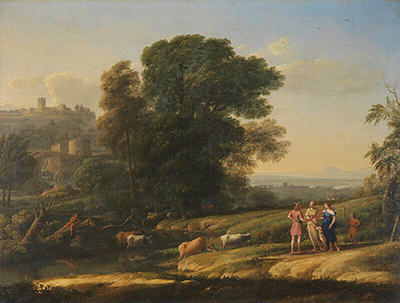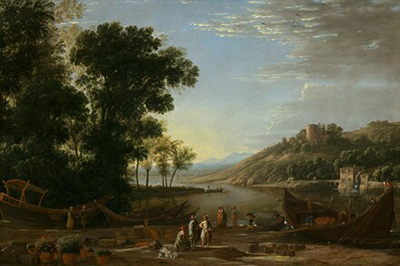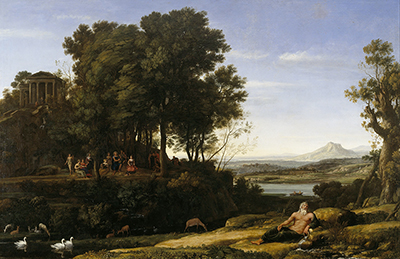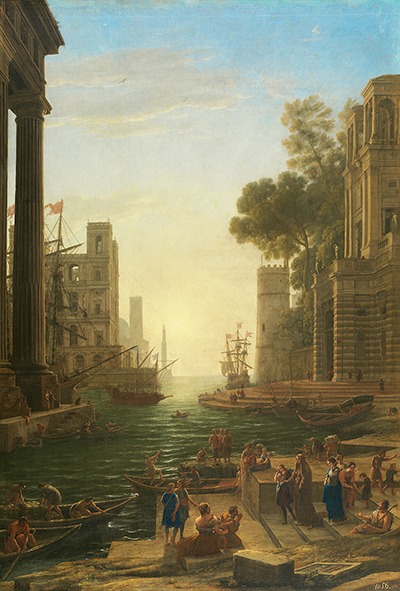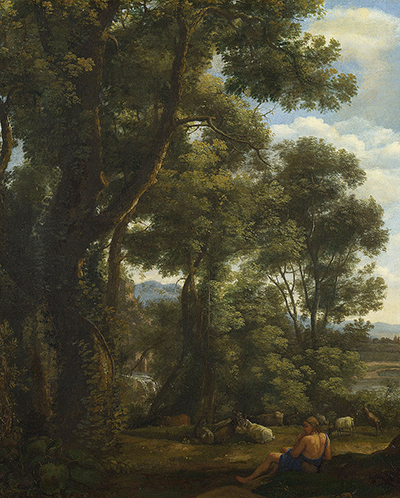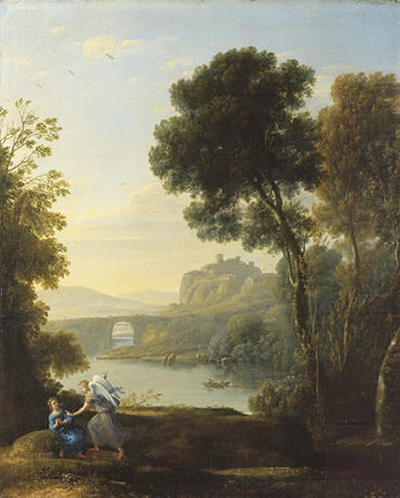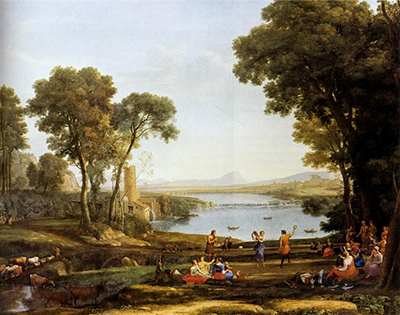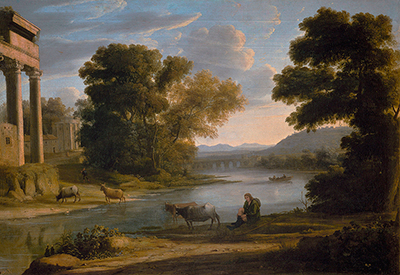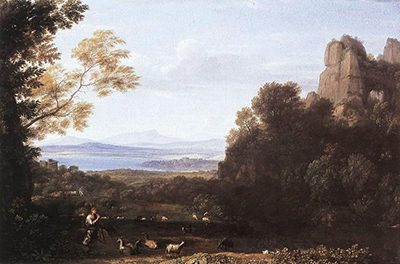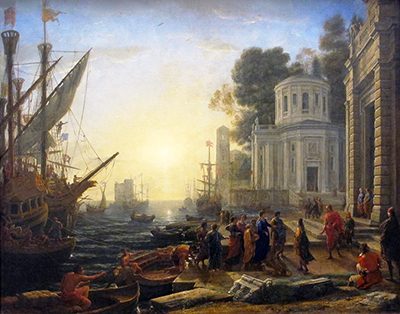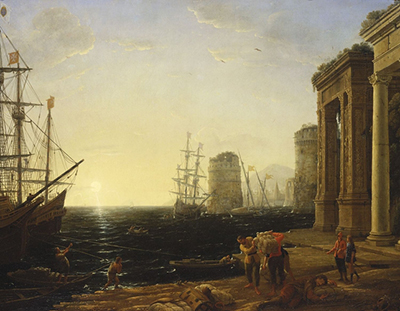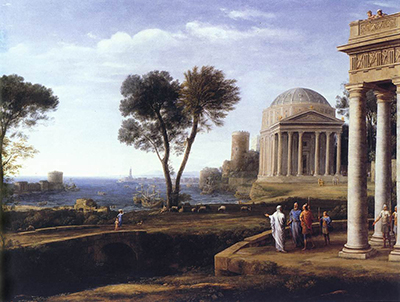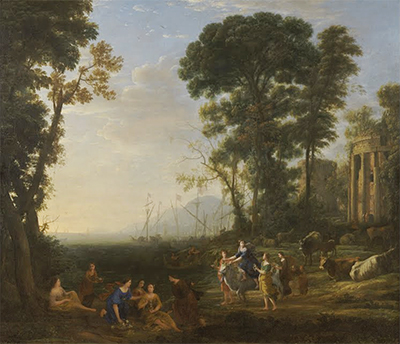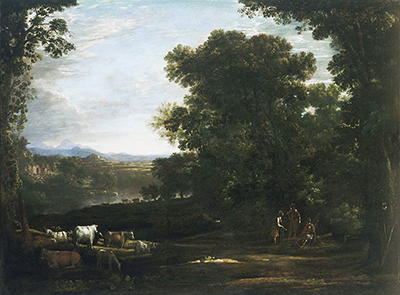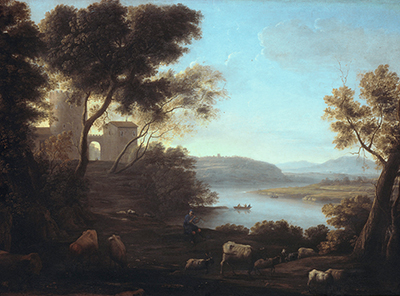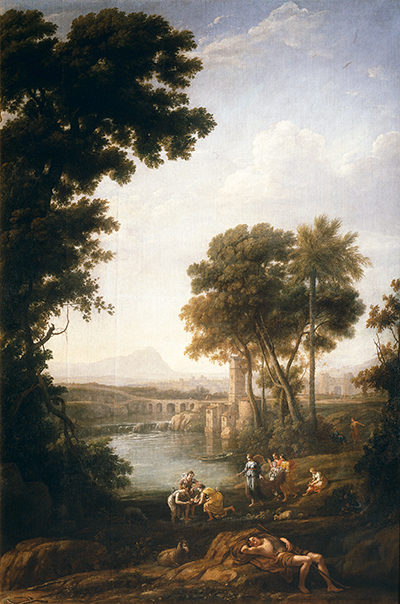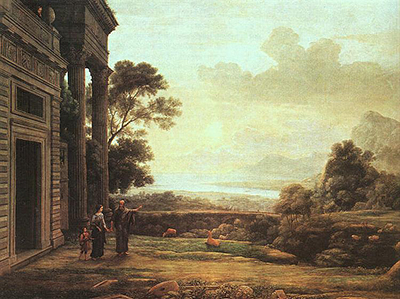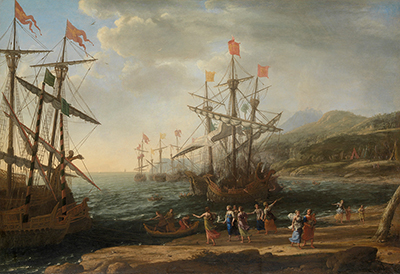Claude Lorrain was a French landscape painter who achieved most of his success across 17th century Italy. He combined themes of mythology with a clever use of light to move this genre onwards and inspire future landscape artists.
The style of Claude Lorrain's paintings was consistent and precise, producing artworks which were developed outdoors, where every detail could be observed. He was also a highly skilled draughtsman which helped in the early phases of his work with oils. The most significant impact made by this artist was how he helped landscape painting to become a more highly regarded genre, when previously it would serve as a support to additional content, such as portraiture. It was now deemed acceptable to focus entirely on the views of the countryside, a harbour or some classical architecture, without the need for human figures to be included within the scene. This started a momentum which would be taken on by other French artists and also many British artists in the century that followed. In recent years there has been a growing acceptance of the importance of his career and the connection that he holds to later European artists.
The Embarkation of the Queen of Sheba and Seaport at Sunset are perhaps Claude Lorrain's most famous paintings and they capture the true essence of this artist in a number of ways. We see the sunsets which were relatively unusual at that time within European landscape art, as well as the exceptional mastery of light, as it reflects across the seascape. There are then also the touches of classical architecture which feature in many of his compositions, as well as human figures who help to refer to a specific religious or mythological theme. The key highlights of his career alternate between these elements, whilst remaining entirely consistent with his overall style and how he delivered perspective within each of these works. His popularity was strongest in Italy, where most of his patrons could be found, but after his death, Claude would become highly regarded right across Europe, with many collectors from France and the UK attempting to acquire his paintings in the 19th century.
One of the keys to Claude's success was in how he essentially improved upon nature. He would work outdoors, admiring each landscape scene in front of him before capturing its key structure and then impressing his own subtle amendments on top. Some of the results of this were breaktaking, and he started to use larger and larger canvases in order to capture as much detail as possible. His style was a fusion of different methods from around Europe and this made his work hard to critics at the time to categorise his career. His paintings were spread between collectors in France and Italy before a number of others based in the UK started to see the brilliance in his work. This sudden abundance of his paintings in that country then allowed local artists to admire these creations up close, encouraging them to then enter the landscape genre themselves. They tended not to copy over his use of classical architecture, but many elements of his approach would be taken on by the likes of Turner who followed on in the 18th century. Claude is known to have been a huge influence on Turner, as well as countless numbers of other artists.
In terms of his influence on British art, there was a great divide between the UK and France due to ongoing wars and this limited many artists to focus only on domestically-held artworks. By that time many Claude artworks have been acquired into private collections which were sometimes opened up to respected artists, and eventually, the public. To see a combination of French and Italian influences within Claude's work was therefore particularly exciting to young British painters who would see this as an alternative to the other items within each collection. Watercolour landscape art would also become strong from around this point, perhaps also inspired, in part, by Lorrain's work. Many of the most technically minded artists in the UK would produce their own copies of Claude's paintings, some of which were exceptionally accurate considering the short period of time that they may have been given to view his work. Over the following centuries, the achievements of the likes of William Turner would then spread back to France, with the Impressionists and other related movements.



